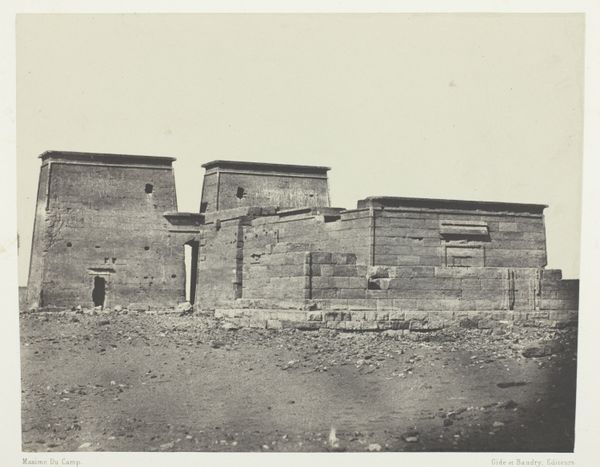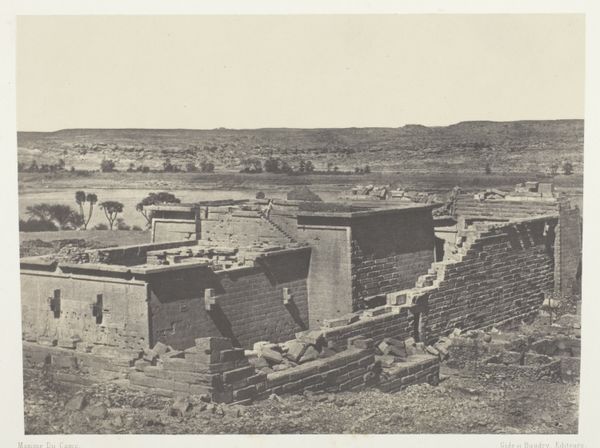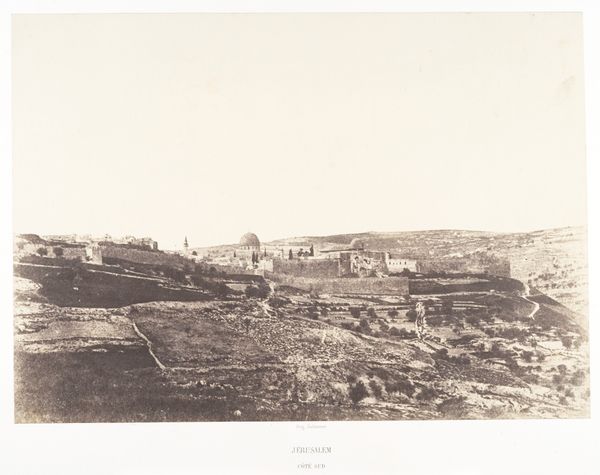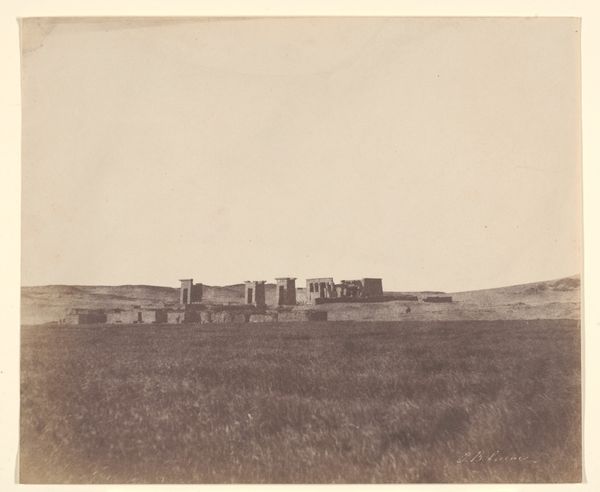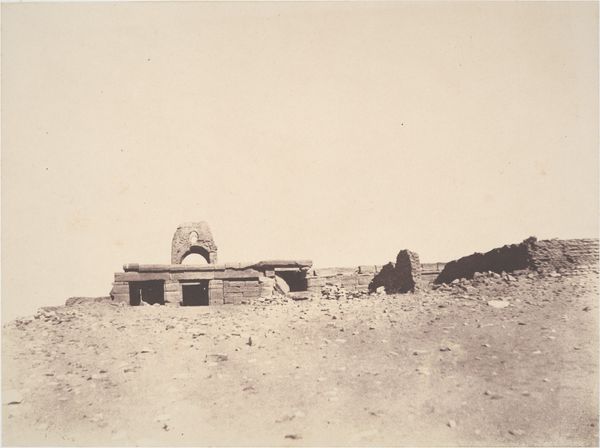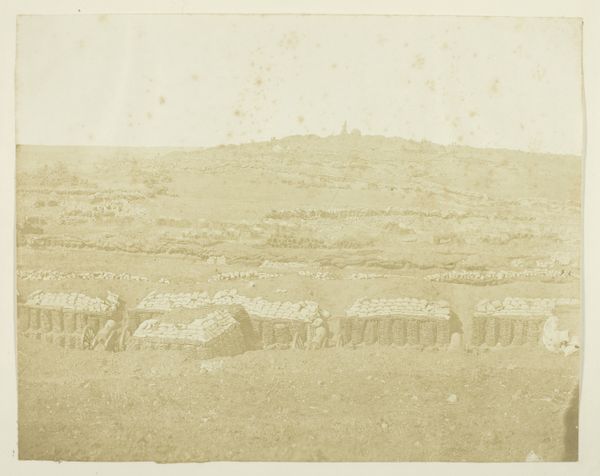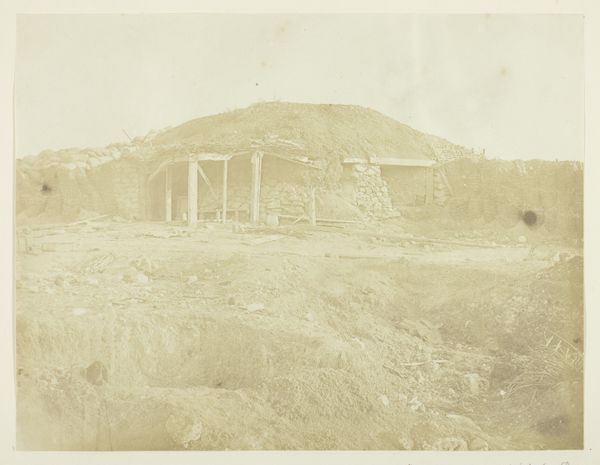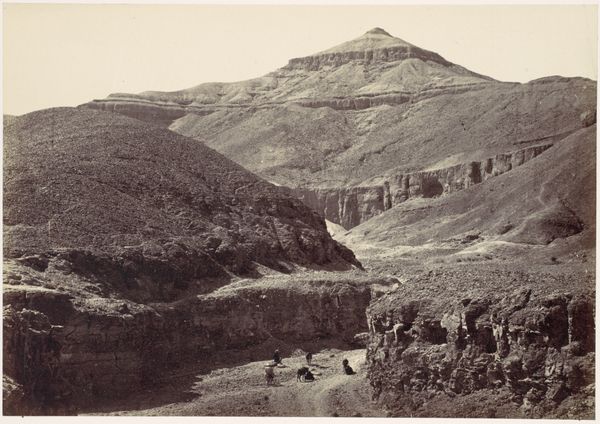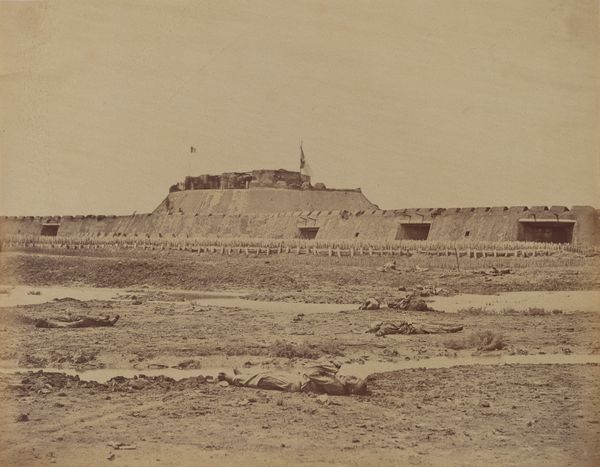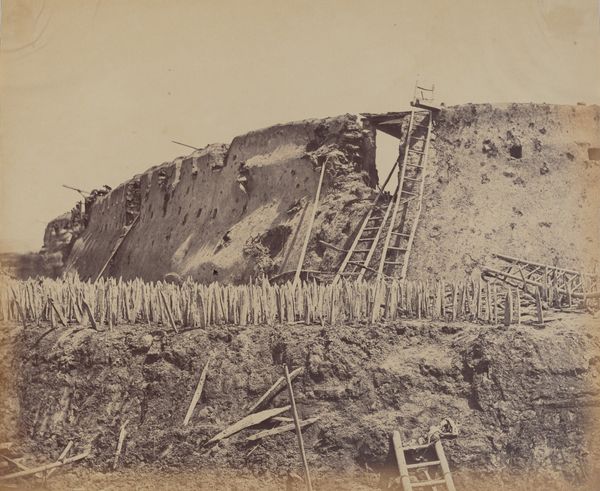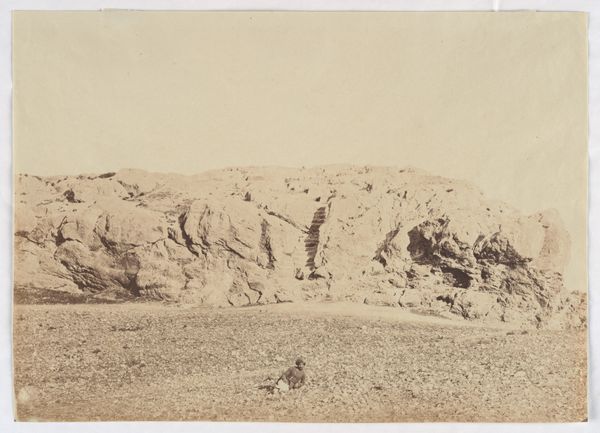
Médinet-Habou,Vue Générale des Rines, Thèbes Possibly 1849 - 1852
0:00
0:00
print, daguerreotype, paper, photography
#
16_19th-century
# print
#
war
#
landscape
#
daguerreotype
#
ancient-egyptian-art
#
paper
#
photography
#
egypt
#
ancient-mediterranean
Dimensions: 16.4 × 20.3 cm (image/paper); 30 × 42.9 cm (album page)
Copyright: Public Domain
Curator: Right, let's talk about Maxime Du Camp's "Médinet-Habou, Vue Générale des Ruines, Thèbes." This photograph, likely taken between 1849 and 1852, is a captivating glimpse into ancient Egypt. Editor: My first thought? Haunting. There's a stark, almost ghostly quality to the image. The ruins seem to whisper secrets across time. And the light—it's so muted, almost mournful. Curator: Exactly. The use of the daguerreotype process adds to that feeling. This photographic method was cutting-edge, but it also resulted in images that feel strangely distant, capturing not just the site, but a whole era of archaeological exploration and colonial ambition. Editor: You can feel that tension—the scientific gaze mixed with, well, the 'taking' of a place. It's a grand ruin, imposing still, but clearly invaded, examined. Even the composition, with the landscape stretching out beneath the structures, feels…possessive, doesn't it? Curator: I think that’s very insightful. Du Camp was commissioned by the writer Gustave Flaubert, and their journey was part of a larger trend of European intellectuals and artists looking to the East for inspiration and knowledge. The image became an artifact embroiled in cultural and institutional history as well. The image isn't just documenting; it’s performing a certain kind of authority, placing Egypt firmly within a Western framework of understanding. Editor: But there’s beauty in the ruin itself, the stubborn persistence of something created so long ago, weathering sun and sand, yet refusing to vanish completely. It speaks volumes, even silently. And those subtle gradations of light...the way they caress the crumbling walls...you know, it reminds me of memory itself: fractured, faded, yet intensely present. Curator: I see what you mean. There is a beauty in how time marks something and perhaps a bit about the hubris of humankind as empires rise and fall. That interplay is really something that Du Camp manages to evoke. Editor: This journey reveals to me that art holds more depth than any historical book and the human condition to appreciate change, ruin, discovery, possession. These black and white subtle lights remind me that beauty can come from decay.
Comments
No comments
Be the first to comment and join the conversation on the ultimate creative platform.
